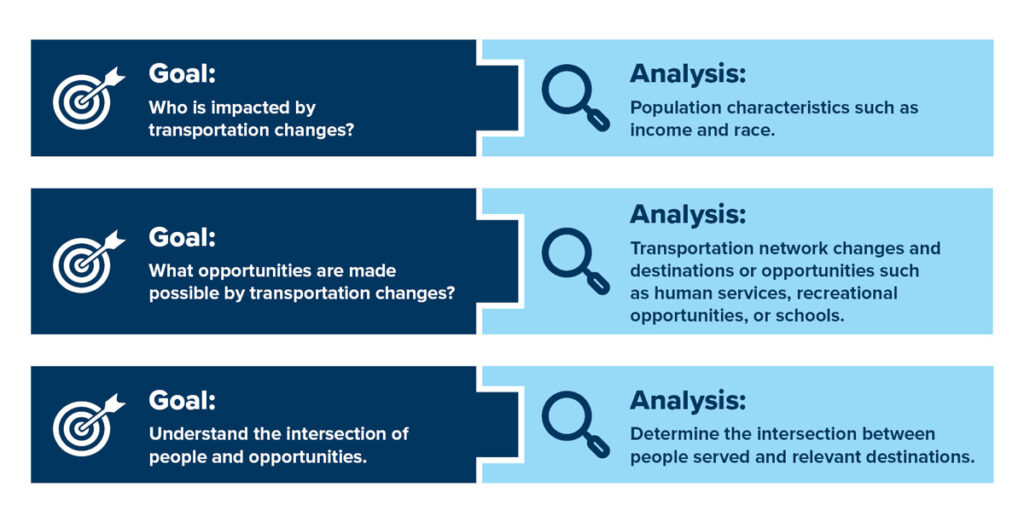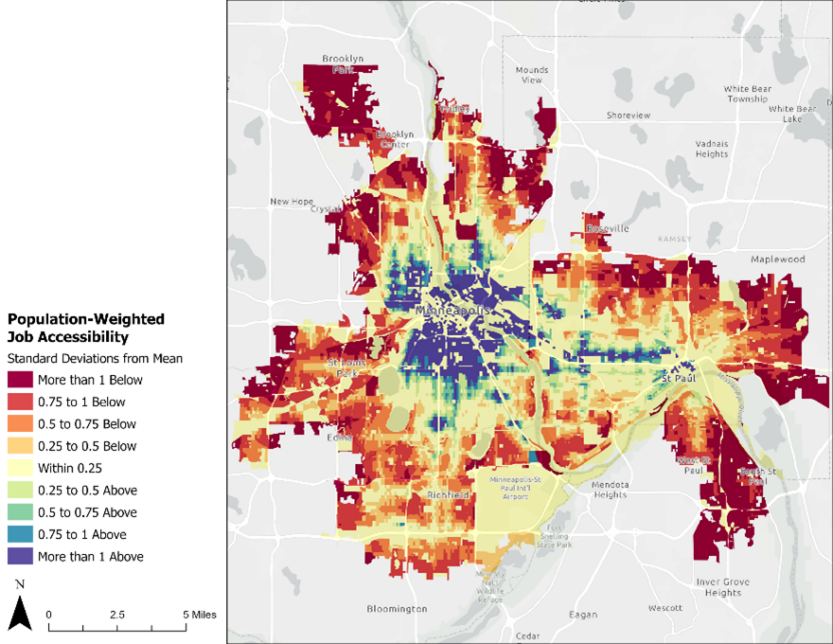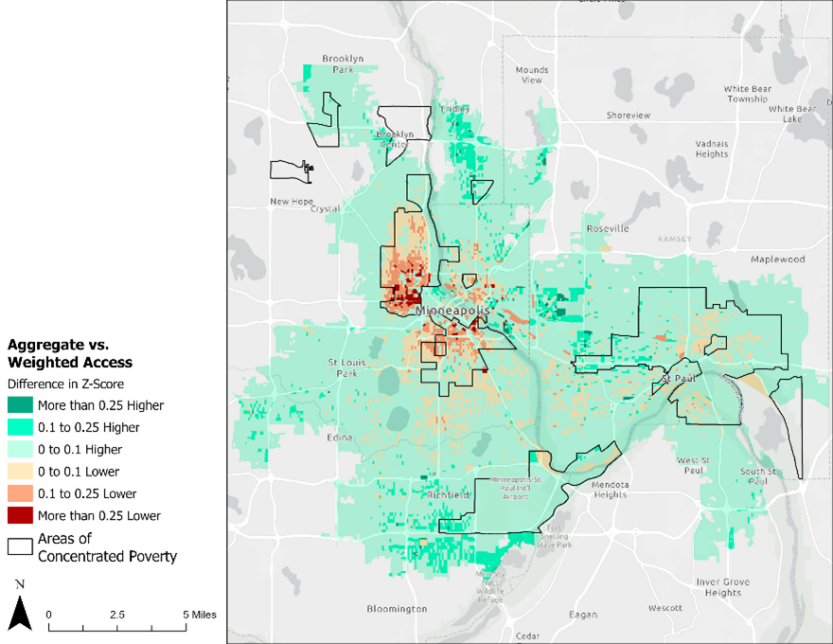Access to destinations is increasingly recognized as an important measure for regional mobility, especially for evaluating equity in public transit and active transportation. While its use is widespread across the transportation industry, access to opportunities is most commonly reported as a high-level aggregation of “total jobs accessible.” This approach is valuable as a general indicator, but this generalization can obfuscate crucial information on underlying travel needs and the equity of solutions.
In an effort to generate a more holistic understanding of community transportation to identify solutions, SRF developed the Equity in Access Framework (EAF), a customized approach to match our clients’ goals:

EAF-C is a suite of measures connecting people with relevant opportunities. One example is a matched accessibility metric that not only considers the jobs people can access but also matches them to the jobs actually worked by people. Our innovative matching of workers and jobs uses high-sample Longitudinal Employer-Household Dynamics (LEHD) variables, including income, occupational sector, and educational attainment, to create a metric that is reflective of people’s commuting requirements. Because LEHD is a nationally available dataset, this method can be applied to communities across the United States.
So, what does the EAF-C look like in practice? As part of our development process, we calculated matched job access by public transit for a set of census blocks in the Twin Cities region. Figure 1 shows the distribution of matched job accessibility using our new method, while Figure 2 compares our results to those derived from traditional “total jobs accessible” methods. Figure 2 highlights how the traditional method can overestimate transit job accessibility in areas of concentrated poverty, for example, in North Minneapolis, where a high density of transit services oriented to downtown Minneapolis may overshadow the actual needs of the existing community.


The Equitable Access Framework is one of many steps SRF is taking to understand how transportation can bridge the gap between communities and the essential destinations of life. The EAF-C matched jobs accessibility is applicable in cases where expanded economic opportunity is a goal. The EAF can be expanded to evaluate before and after implementation of new transit service, pedestrian and bike infrastructure investment, or roadway improvement. In the case of transit investment, a temporal component can be included to understand how changing the hours and frequency of service can benefit your community. Analysis for all modes can be expanded to understand different types of destinations from grocery stores to human services.
Interested in applying the EAF to your project?
Contact Hana Randle or Jackie Nowak.

